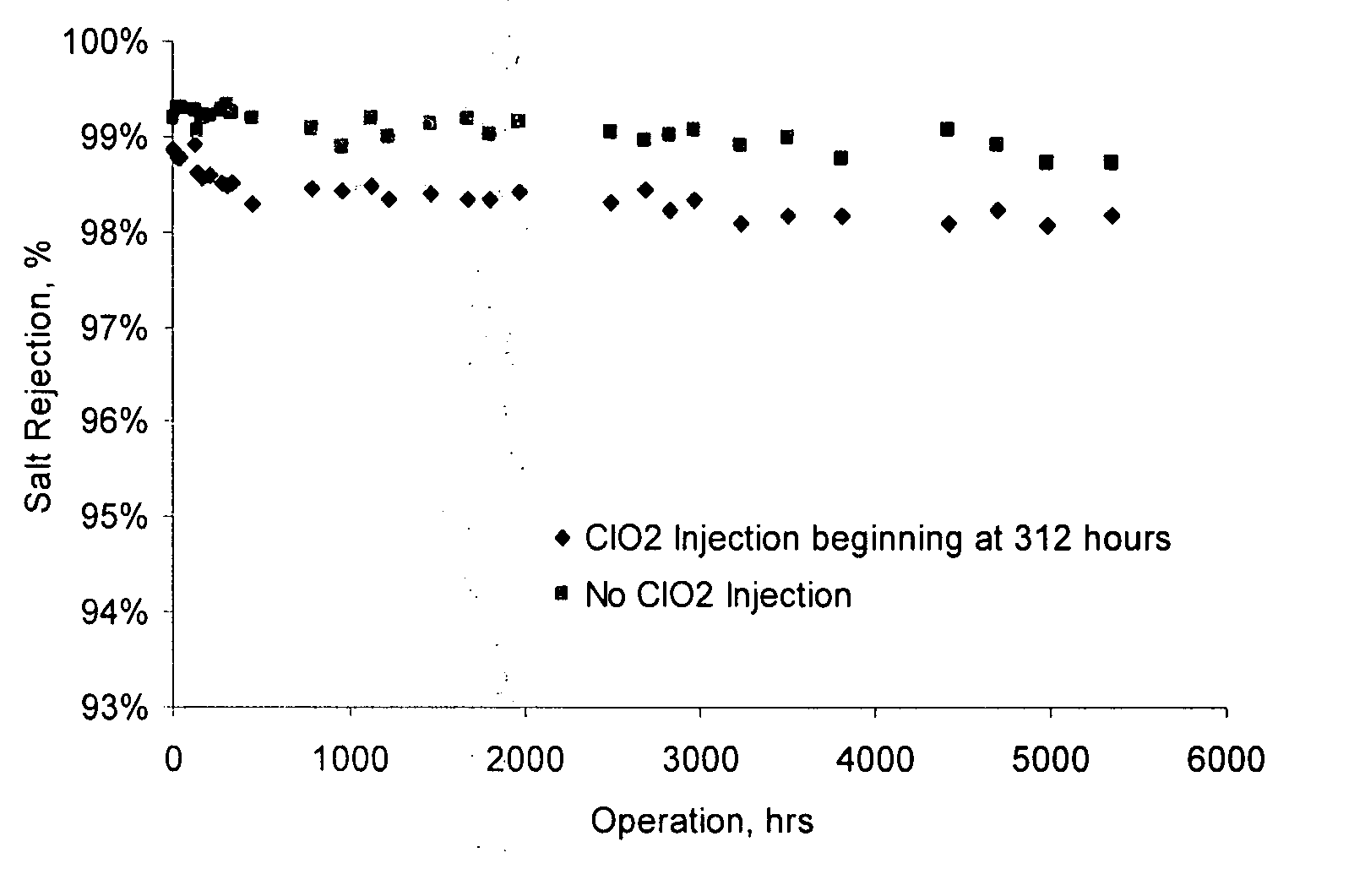Biofilm reduction in pressure driven membrane-based water treatment systems
a technology of pressure-driven membranes and water treatment systems, which is applied in water/sewage treatment by oxidation, reverse osmosis, and membranes, etc. it can solve the problems of biofilm formation, affecting filtering capability, and reducing performance, so as to reduce biofilm and/or prevent the effect of preventing the formation of biofilm
- Summary
- Abstract
- Description
- Claims
- Application Information
AI Technical Summary
Benefits of technology
Problems solved by technology
Method used
Image
Examples
examples
[0062] In this example, two reverse osmosis systems were mounted onto a skid. The reverse osmosis systems included a Koch 2.4 by 40-inch brackish water membrane. One system was used as a control whereas the other system was further modified to include plumbing for introducing a chlorine dioxide solution into the recirculation and / or feed lines. A chlorine dioxide solution at a concentration of about 500 mg / L was used.
[0063] A Halox (Bridgeport, Conn.) Accu-Cide system with a 5 gallon dosage system was used to generate and store chlorine dioxide solution at a concentration of approximately 500 mg / L. The evaluation was conducted with the following parameters recorded. Absolute measurements of flow rates were taken using a graduated cylinder and stopwatch. Conductivity measurements were taken using a Myron-L conductivity meter. Temperatures were taken using a thermometer. Installed pressure gauges were used to obtain pressure values. A Halox Accu-Meter chlorine dioxide colorimeter (DP...
PUM
 Login to View More
Login to View More Abstract
Description
Claims
Application Information
 Login to View More
Login to View More - R&D
- Intellectual Property
- Life Sciences
- Materials
- Tech Scout
- Unparalleled Data Quality
- Higher Quality Content
- 60% Fewer Hallucinations
Browse by: Latest US Patents, China's latest patents, Technical Efficacy Thesaurus, Application Domain, Technology Topic, Popular Technical Reports.
© 2025 PatSnap. All rights reserved.Legal|Privacy policy|Modern Slavery Act Transparency Statement|Sitemap|About US| Contact US: help@patsnap.com



